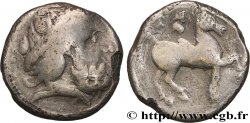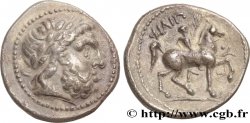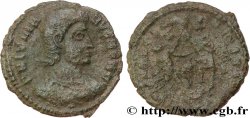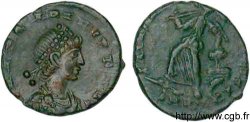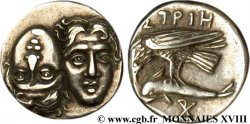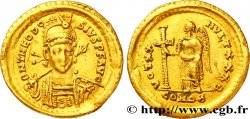v34_1314 - DANUBIAN CELTS - IMITATIONS OF THE TETRADRACHMS OF PHILIP II AND HIS SUCCESSORS Tétradrachme “au rameau”
MONNAIES 34 (2008)
Starting price : 950.00 €
Estimate : 1 500.00 €
Realised price : 1 200.00 €
Number of bids : 2
Maximum bid : 1 381.00 €
Starting price : 950.00 €
Estimate : 1 500.00 €
Realised price : 1 200.00 €
Number of bids : 2
Maximum bid : 1 381.00 €
Type : Tétradrachme “au rameau”
Date: (IIe-Ier siècles avant J.-C.)
Metal : silver
Diameter : 25,5 mm
Orientation dies : 1 h.
Weight : 14,03 g.
Rarity : R2
Coments on the condition:
Magnifique exemplaire, avec une frappe parfaite tant au droit qu’au revers. Fine patine grise, très légèrement irisée
Catalogue references :
Obverse
Obverse legend : ANÉPIGRAPHE.
Obverse description : Tête laurée de Zeus à droite ; grènetis.
Reverse
Reverse description : Cavalier au pas à droite, tenant une palme de la main droite ; le cheval lève l'antérieur à droite ; entre les jambes du cheval, une torche.
Reverse legend : FILIP - POU
Commentary
Si le statère d’or de Philippe II de Macédoine a servi de prototype à de nombreuses imitations gauloises, le tétradrachme n’a pas été imité en Gaule, mais reste principal sujet d’inspiration des monnaies pour les Celtes du Danube (LT. 9697-9767, 9768-9832, 9618-9630, 9870-9886). Les premières imitations furent frappées dans le premier quart du IIIe siècle avant J.-C. La fabrication des copies serviles, puis des imitations, enfin des frappes celtiques continuèrent pendant plus de deux siècles.
Au revers la torche correspond à Philippe III pour Amphipolis entre 323 et 316. Cet exemplaire est d’un très bon style, encore très proche du prototype.
While the gold stater of Philip II of Macedon served as a prototype for many Gallic imitations, the tetradrachm was not imitated in Gaul, but remains the main source of inspiration for coins for the Danube Celts (LT. 9697-9767, 9768-9832, 9618-9630, 9870-9886). The first imitations were struck in the first quarter of the 3rd century BC. The manufacture of servile copies, then imitations, and finally Celtic strikes continued for more than two centuries. On the reverse, the torch corresponds to Philip III for Amphipolis between 323 and 316. This example is of a very good style, still very close to the prototype
Au revers la torche correspond à Philippe III pour Amphipolis entre 323 et 316. Cet exemplaire est d’un très bon style, encore très proche du prototype.
While the gold stater of Philip II of Macedon served as a prototype for many Gallic imitations, the tetradrachm was not imitated in Gaul, but remains the main source of inspiration for coins for the Danube Celts (LT. 9697-9767, 9768-9832, 9618-9630, 9870-9886). The first imitations were struck in the first quarter of the 3rd century BC. The manufacture of servile copies, then imitations, and finally Celtic strikes continued for more than two centuries. On the reverse, the torch corresponds to Philip III for Amphipolis between 323 and 316. This example is of a very good style, still very close to the prototype







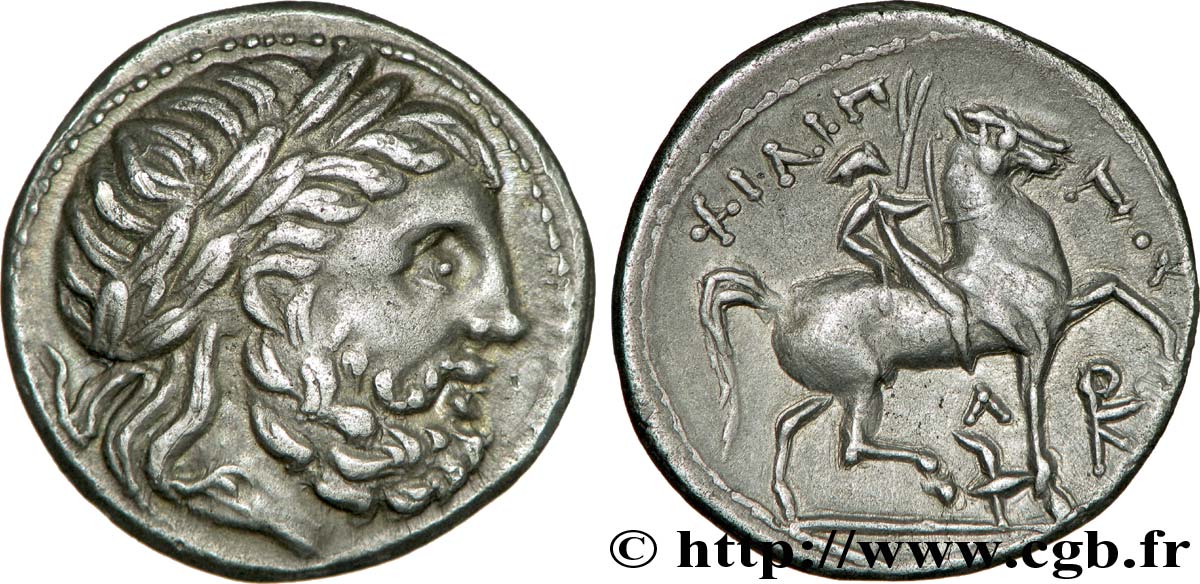
 Report a mistake
Report a mistake Print the page
Print the page Share my selection
Share my selection Ask a question
Ask a question Consign / sell
Consign / sell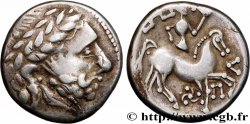
 Full data
Full data

